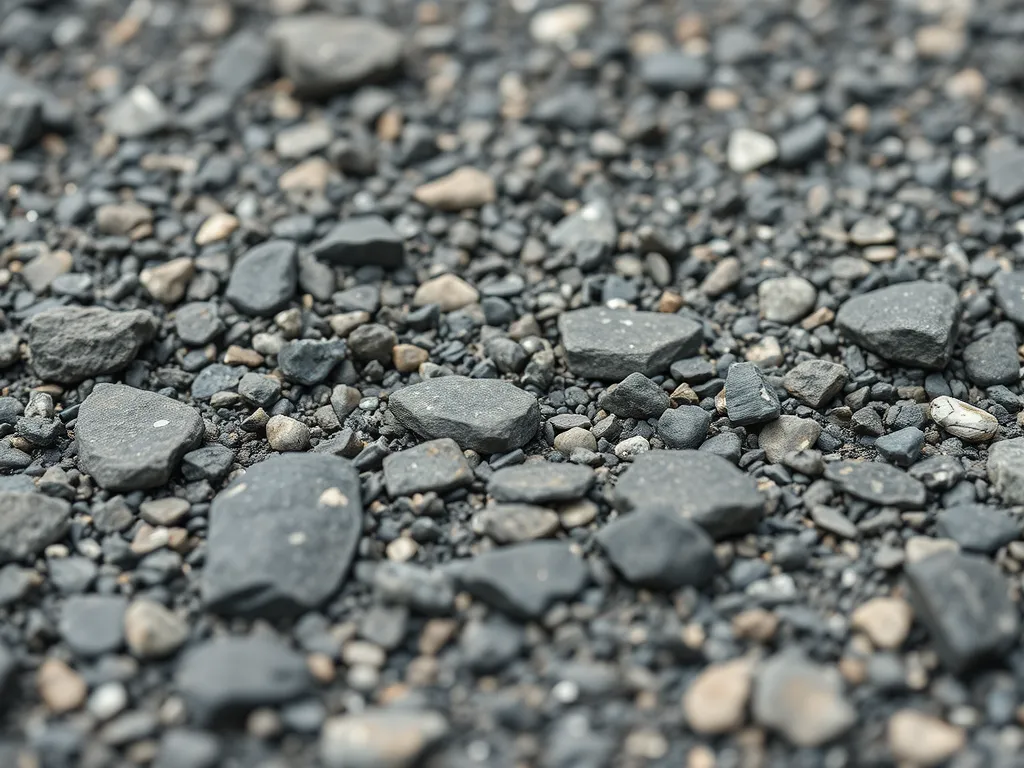Asphalt Weather Resistance: Ensuring Longevity and Durability in Harsh Conditions
Published on: August 18, 2025 | Last Updated: April 14, 2025
Written By: George Voss
Asphalt weather resistance is the pavement’s ability to withstand heat, cold, water, and UV rays without cracking or breaking down. It combines stone aggregates with bitumen binder to form a flexible, water-repellent surface. Polymer-modified asphalt handles temperature swings from -40°F to 200°F better than standard mixes, while hot mix asphalt (HMA) resists heat better than cold patch materials. Proper installation above 50°F and sealcoating every 2-3 years enhance this resistance.
This guide details how weather impacts asphalt. See how freeze-thaw cycles create potholes, heat causes rutting, and sun exposure leads to brittleness. Compare materials like PG 64-22 asphalt (used in northern states) and PG 76-16 (common in southern regions). Learn maintenance methods—crack filling, drainage slopes, and additives like styrene-butadiene-styrene polymers. Get installation tips and eco-friendly options like recycled asphalt pavement (RAP).
Contents
- Understanding Asphalt Weather Resistance
- Impact Of Weather Conditions on Asphalt Durability
- Enhancing Asphalt Weather Resistance Through Maintenance
- Installation Best Practices for Weather-resistant Asphalt
- Environmental Considerations for Weather-resistant Asphalt
- FAQs on Asphalt Weather Resistance
- Closing Thoughts
- Additional Resources for You:
Understanding Asphalt Weather Resistance
Asphalt weather resistance determines how well pavements endure environmental stressors like rain, heat, and freezing temperatures. This trait directly impacts lifespan, maintenance costs, and structural integrity over decades.
What is Asphalt Weather Resistance?
Definition and Core Principles
Asphalt weather resistance refers to the material’s ability to repel water, handle temperature shifts, and resist sun damage. The secret lies in bitumen—a viscous petroleum binder that coats aggregates like crushed stone and sand. When compacted, this mix forms a dense, waterproof surface. Core principles include proper compaction (92-96% density), slope design (1-2% grade), and polymer-modified binders.
Role in Asphalt Longevity and Performance
Weather-resistant asphalt lasts 20+ years versus 12-15 years for standard mixes. It prevents common failures: cracks from freeze-thaw cycles, rutting in heat above 140°F, and raveling caused by UV exposure. Properly designed asphalt reduces repair costs by up to 40% over its lifespan.
Key Properties Contributing to Weather Resistance
Asphalt Waterproofing and Moisture Repellency
Water infiltration causes 80% of asphalt deterioration. High-quality mixes use anti-stripping additives like lime or amines to strengthen the bond between bitumen and aggregates. Polymer-modified binders reduce moisture damage by 60%, while a 2-inch asphalt layer can block 95% of surface water.
Thermal Stability and Flexibility
Performance Grade (PG) binders—rated for specific climates—handle temperatures from -40°F to 302°F. PG 64-22, common in northern states, stays flexible at -22°F but resists softening in 64°F heat. Thermal cracks drop by 70% when using PG binders matched to regional temperature extremes.
UV Radiation and Chemical Breakdown Resistance
Sunlight breaks down surface binders, causing brittleness and fading. Coal tar sealcoating reflects 90% of UV rays, while asphalt emulsion seals block 75%. Reapplying sealants every 2-3 years at $0.15-$0.25 per sq.ft. slows this degradation.
These properties set the stage for examining how specific weather conditions test asphalt’s limits. Next, we’ll analyze temperature extremes, water damage, and freeze-thaw cycles in detail.
Impact Of Weather Conditions on Asphalt Durability
Weather shapes how long asphalt lasts. Heat, cold, water, and sun all play roles in wear and tear. Let’s break down each factor.
Thermal Stress: Heat and Cold Effects
Asphalt bends and shifts with temps. Too hot or too cold strains its structure.
How High Temperatures Soften Asphalt
At 140°F+, asphalt’s bitumen binder softens. This leads to ruts under heavy loads. PG 64-22 binders resist heat better in southern states.
Subzero Temperatures and Asphalt Brittleness
Below 32°F, asphalt loses flex. Ice widens tiny cracks. Winter potholes often start this way.
Ideal Temperature Ranges for Asphalt Installation
Pave between 50°F and 85°F for best results. Cold mixes with additives work down to 40°F but cost 15% more.
Water Damage and Moisture Infiltration
Water is asphalt’s stealth foe. It seeps in, weakens layers, and speeds decay.
Poor Drainage and Crack Formation
Standing water eats asphalt fast. A 1/8” crack lets 25 gallons of water seep in yearly. Slope pavements 2%+ to shed runoff.
Water Retention in Subbase Materials
Wet gravel or soil under asphalt weakens load support. Use 6” crushed stone base to block water rise.
UV Radiation and Oxidation
Sun rays fade and dry asphalt tops. In 5 years, unsealed surfaces lose 30% of their oils.
Surface Degradation from Sun Exposure
UV breaks bitumen bonds. Gravel chips loosen, leaving rough, gray patches. Sealcoating every 3 years cuts damage by half.
Freeze-thaw Cycle Damage
Winter’s freeze-thaw loop hammers pavements. Water in cracks freezes, expands, then melts—repeating the assault.
Expansion and Contraction in Cold Climates
Ice expands 9% in volume. This force cracks slabs in weeks. Northern mixes use 5.5% air voids to absorb pressure.
Preventing Potholes and Surface Erosion
Fill cracks before first frost. Polymer-modified tack coats bond better in cold, cutting pothole risks by 40%.
Next, we’ll explore how smart upkeep boosts asphalt’s fight against the elements.

Enhancing Asphalt Weather Resistance Through Maintenance
Proper care keeps asphalt strong against harsh elements. Let’s explore key steps to boost weatherproofing.
Sealcoating for Weatherproofing
Sealcoating shields asphalt from sun, rain, and ice. Apply every 2-3 years for best results.
Benefits of Regular Sealcoating Applications
- Blocks UV rays that cause asphalt to fade and crack
- Fills surface gaps to stop water seepage
- Restores asphalt’s deep black look for better heat absorption
Evaluating Sealcoat Product Effectiveness
Choose coal tar or asphalt-based sealants with 60-70% solids content. High-grade options resist oil spills and reduce raveling by 80%.
Crack Repair and Preventive Measures
Small cracks grow fast under weather stress. Fix them early to avoid costly fixes later.
Addressing Minor Cracks Before Expansion
Use rubberized crack filler for gaps under 0.5 inches. Hot-pour sealants work best in temps above 50°F.
Importance of Timely Repairs
Unsealed cracks let water reach the base layer. This weakens load support, leading to potholes in freeze-thaw cycles.
Drainage Optimization Strategies
Water is asphalt’s top enemy. Smart slope design keeps surfaces dry.
Slope Design and Runoff Management
Aim for 2% slope (1/4 inch per foot) to direct runoff. Pair with trench drains or catch basins in heavy rain zones.
Additives for Improved Weather Resistance
Modern mixes fight weather damage better than standard asphalt.
Polymer-Modified Asphalt Mixes
Adding SBS polymers (3-7% by weight) boosts flex strength by 300%. Ideal for areas with extreme heat or cold swings.
Anti-Stripping Agents for Moisture Resistance
Lime or liquid amines bond asphalt to stone. Reduces moisture damage by 40% in wet climates.
While upkeep matters, proper install methods set the stage for weatherproof success. Next, we’ll break down paving best practices for tough climates.
Also See: Best Practices for Asphalt Driveway Maintenance
Installation Best Practices for Weather-resistant Asphalt
Proper installation ensures asphalt resists rain, heat, and frost. Follow temp rules and mix designs to boost pavement life.
Temperature Guidelines for Laying Asphalt
Heat affects how asphalt binds. Lay it within set temp ranges to prevent cracks and weak spots.
Minimum Temperature Thresholds for Paving
Pave above 50°F. Asphalt cools too fast below this, hurting compaction. Hot-mix needs 280°F to 330°F at install. Warm-mix works down to 40°F but costs 5-10% more.
| Temp Range | Compaction | Risk Level |
|---|---|---|
| 50-95°F | Optimal | Low |
| 40-50°F | Moderate | Medium |
| Below 40°F | Poor | High |
Risks of Cold-Weather Asphalt Installation
Cold temps cause weak bonds between stones and binder. Pavement loses 20% strength if laid under 40°F. Frost heave lifts slabs, creating gaps that let water in.
Thermal Resistance Considerations
Asphalt mixes must handle heat flow without breaking down. Use dense-graded stone or polymer gels to block heat damage.
How Asphalt Compositions Handle Heat Transfer
Polymer-modified binders slow heat flow by 30%. Stone matrix asphalt (SMA) reflects 15% more sunlight than standard mix. Additives like gilsonite raise melt points to 170°F, cutting rutting in summer.
These thermal tactics also support greener paving methods. Up next: eco-friendly mixes that fight weather wear.

Environmental Considerations for Weather-resistant Asphalt
Weather-resistant asphalt must perform under extreme conditions while minimizing ecological impact. Builders now integrate sustainable methods to boost pavement life spans without compromising environmental goals.
Sustainable Practices to Reduce Weathering
Reusing materials cuts waste and strengthens asphalt’s ability to handle temperature shifts. Recycled components lower production energy by 20% compared to virgin materials, making mixes both durable and eco-conscious.
Recycled Materials in Asphalt Mixes
Reclaimed asphalt pavement (RAP) makes up 15-30% of modern mixes. Combined with recycled asphalt shingles (RAS), these materials improve waterproofing through aged bitumen’s binding power. Tests show RAP-enhanced asphalt resists cracking at -10°F and stays stable up to 140°F. Blending recycled content with polymer-modified binders creates surfaces that endure freeze-thaw cycles 40% longer than conventional asphalt.
Balancing Durability and Eco-friendly Solutions
Warm-mix asphalt (WMA) technologies cut production temps by 50°F, reducing fuel use by 35%. Lower heat preserves binder integrity, boosting resistance to thermal cracking. Adding crumb rubber from tires enhances flexibility, allowing pavements to expand without splitting in summer heat. These mixes maintain 95% of traditional asphalt’s load-bearing capacity while shrinking carbon footprints.
Permeable asphalt designs tackle water damage at the source. Open-graded mixes let 300-500 gallons per hour drain through, preventing potholes from trapped moisture. This system pairs with recycled aggregate bases to filter pollutants, meeting EPA stormwater standards. Though initial costs run $3-$5 more per square foot, permeable pavements last 25+ years with minimal repairs.
Next, proper installation techniques ensure these advanced materials perform as designed. Temperature control during paving directly affects how well asphalt withstands seasonal stress.
FAQs on Asphalt Weather Resistance
At What Temperature Should You Not Lay Asphalt?
Asphalt should not be laid at temperatures below 50°F. When paving in colder weather, the asphalt cools too quickly, leading to poor compaction and a weakened bond.
What is the Thermal Resistance Of Asphalt?
The thermal resistance of asphalt depends on its composition. Performance Grade (PG) binders are rated for specific temperatures, typically ranging from -40°F to 302°F, with different grades providing specified flexibility and strength at various temperatures.
Does Weather Affect Asphalt Paving?
Yes, weather significantly affects asphalt paving. High temperatures can soften asphalt, leading to ruts, while cold weather can cause brittleness and cracking. Moisture and UV exposure can also degrade the surface over time.
How Does Snow Impact Asphalt Longevity?
Snow can negatively impact asphalt longevity through freeze-thaw cycles, where melted water seeps into cracks and freezes, causing further expansion and cracking. Proper drainage and timely maintenance can help mitigate these effects.

Closing Thoughts
Asphalt weather resistance is vital for ensuring the longevity and durability of asphalt surfaces, especially in extreme conditions. Proper understanding of its properties, such as waterproofing, thermal stability, and UV resistance, can significantly enhance performance. Additionally, proactive strategies, including sealcoating and timely repairs, play a critical role in extending the lifespan of asphalt installations.
Environmental considerations, like incorporating recycled materials, also contribute to creating more durable and sustainable asphalt solutions. By following best practices during installation and regular maintenance, you can optimize weather resistance and protect your investment.
For detailed insights and tools to help with your asphalt needs, check out Asphalt Calculator USA.
Additional Resources for You:
- The Asphalt Institute. (2007). MS-4: The Asphalt Handbook. Lexington, KY: Asphalt Institute.
- How Weather Situations Distress Asphalt | EastCoat Pavement Services
- How Does Weather Affect Asphalt Paved Surfaces?
- A systematic review on the strategies of reducing asphalt pavement temperature – ScienceDirect
- The Impact of Weather on Asphalt Paving: Best Practices for Hot and Cold Climates – Bennett Paving


